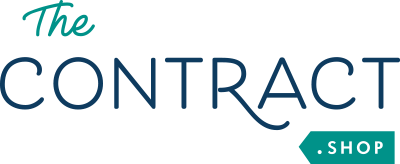Your Cart is Empty
Shop confidently - 14-day no-hassle return policy
Shop confidently - 14-day no-hassle return policy
Shop confidently - 14-day no-hassle return policy
Many experienced graphic designers aspire to break free from the constraints of the traditional 9:00 to 5:00 job. They dream of the freedom of being able to choose which projects they work on, manage their own time, and escape from a monotonous daily routine.
Does this sound good to you? It might be time to look into how to start freelancing as a graphic designer and website design contract templates.
To thrive in the dynamic world of freelancing, consider these strategies:
To be a successful freelance graphic designer, you need to have a solid foundation of skills. The industry is ever-evolving, and you must stay on top of trends. Soak up knowledge from various sources, practice rigorously, and gain hands-on experience.
You must be open to learning new techniques and software and staying in tune with shifting design aesthetics and functionalities. Whether you enroll in a new design course or engage in self-guided learning, practice and perseverance are key.
For instance, the use of 3D elements in graphic design has grown exponentially. Software like Adobe Dimension, Blender, or Sketchup can help you incorporate 3D elements into your work. Neomorphism (also known as ‘new skeuomorphism’) is a design trend making waves in user interface design. It combines the clean and simple aesthetics of flat design with skeuomorphic details, making design elements look like they’re projecting out from the background.
Augmented reality and virtual reality are also hot technologies that are not only popular for gaming but are increasingly used in other aspects of graphic design. They offer immersive experiences that engage audiences in entirely new ways. By honing your existing skills and embracing emerging trends, you'll ensure your design offerings remain current, relevant, and appealing to potential clients.
Creating your unique brand identity is crucial. Consider using your name for your venture or brainstorm a name that reflects the essence of your work. An impactful online presence can help you connect with potential clients globally.
Your portfolio is your most potent marketing tool–it is a testament to your skills, style, and versatility. It's more than just a collection of your work. It's the narrative of your professional journey, your growth as a designer, and your ability to translate diverse client needs into compelling visual content.
Kickstarting your freelance career requires some hustle. You need to land your first clients to set your business in motion and provide a much-needed confidence boost.
Initially, accepting most of the incoming work is wise, even if it falls slightly outside your comfort zone. This approach helps build a diverse client base and gain invaluable experience. As your business gains stability, you can start being choosier about the projects you take on.
A good starting point is to explore freelance job platforms and tap into your personal and professional network. Ask your friends, acquaintances, or family if they know anyone looking for graphic designer expertise. Your network is a crucial part of your freelance journey. It should ideally include past and present clients, potential clients, colleagues, friends, and family.
Be proactive in seeking new opportunities because freelance life can be unpredictable. One month could be chock full of projects, and the next might be quiet. It's advisable to consistently dedicate time to outreach activities like networking, search engine optimization, and social media marketing. After completing a project, don't hesitate to ask your satisfied client for a testimonial that you can include in your marketing materials or social media accounts.
Do a little research to determine what you should charge as a graphic designer. Setting your rates depends on several factors, including your level of expertise and experience, the project's scope, industry standards, and operating costs.
You need to know what your expenses are and make sure they include items such as software subscriptions, hardware purchases or maintenance, taxes, health insurance, and rent–even if you work from a home office. Remember to account for your unique skills and creativity and ensure your rates cover your time and overhead. Providing clients with a detailed proposal can help justify your fees.
Take advantage of contract templates to streamline administrative tasks. Be sure to clearly define the scope of work, including the services you will provide, the timeline for completion, and the payment schedule. It should also outline how revisions or changes to the project scope will be handled. The contract should address who owns the intellectual property rights to the work to prevent future disputes.
The Contract Shop® offers a suite of customizable contracts and templates that can help protect your work. Our digital products are drafted by lawyers so you won’t need to pay expensive legal fees.
In the initial days of your freelance career, it's all about creating an impressive track record. Aim not just to meet but to exceed client expectations, even if it will cost you more time and effort. By overdelivering, you increase the likelihood of repeat business or referrals, especially if you are just starting your freelancing journey!
Kevin Gallagher is the CEO of The Contract Shop®, a contract template store for creative entrepreneurs, freelancers, coaches, and more. His background is in helping online businesses grow, having previously worked at Allbirds managing part of their operations. He is proud to report that his digital artist wife Mandy is a happy customer of The Contract Shop®, and his main motivation is to help as many people like her as possible with the tools that they need to confidently manage their businesses.
Comments will be approved before showing up.
